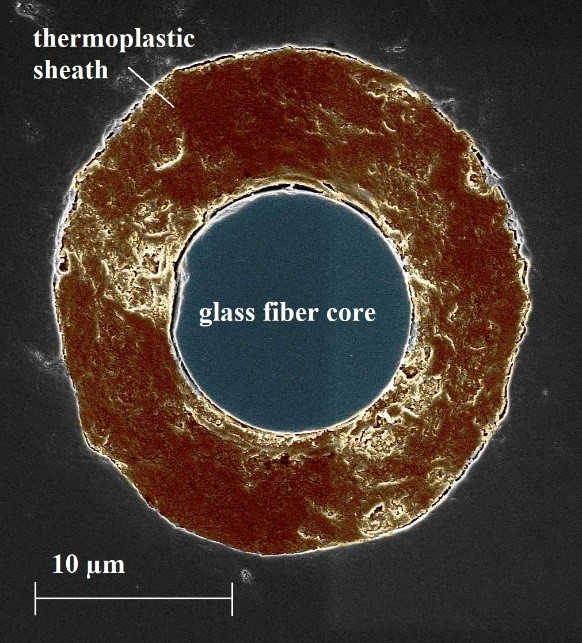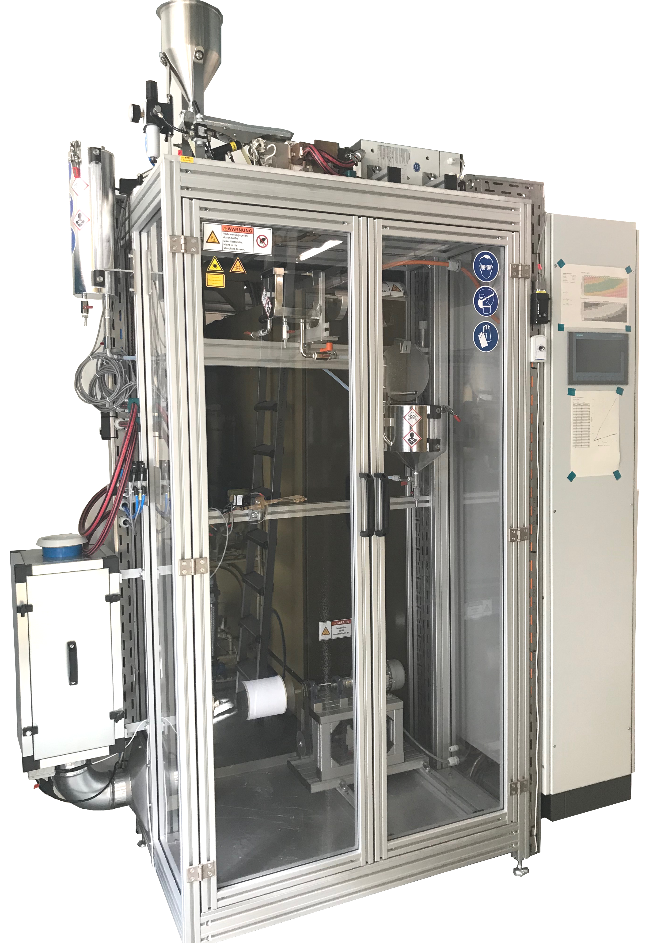Engineering fiber architecture on the micro-level for high-volume fabrication of composites
This project investigates the concept and manufacturing process of hybrid bicomponent fibers, which was previously developed at CMASLab. The main focus lies on the various aspects during scaling the state-of-the-art process for high-volume fabrication of this novel material architecture.
Project Team
- Nicole Aegerter, Doctoral Student
- Shelly Arreguin, Co-advisor
- Paolo Ermanni, Principle Investigator
Contact
Project Duration
2018 to present
Funding Sources
- CMASLab internal funding
Project Description
Energy saving potential of lightweight structures
Lightweighting is one method to reduce vehicular energy demand through overall mass reduction. Thermoplastic composites are among the potential material candidates for lightweight vehicles because of their; short cycle times due to the absence of time-consuming curing reactions, recyclability, joining, forming and reforming abilities.
Hybrid bicomponent fibers for rapid consolidation
High-volume manufacturing of thermoplastic composites is typically performed by rapid stamp forming of an intermediate material. Achieving the necessary short cycle times is possible by inserting a pre-heated part into a press held at lower temperature. However, existing feedstock tends to be either very expensive or exhibits increased processing times due to the nature of the preform material. Hybrid bicomponent fibers (Fig. 1) are a material class, which overcomes these drawbacks by cladding individual glass fibers in a thermoplastic sheath. This fiber architecture allows for beneficial conforming to complex shapes in the dry state, while rapid cycle times are achieved due to the minimized flow lengths of the matrix material during consolidation.
Efficient manufacturing of these fiber architectures
At CMASLab, a concept to efficiently manufacture such fibers has been developed and intensively investigated. Eventually, these efforts have resulted in a pilot plant for the continuous fabrication of hybrid bicomponent fibers (Fig. 2). With the existing manufacturing stage, a glass fiber monofilament can be coated in-line with the fiber formation.
What is the potential of this material?
While proving the benefit during forming and consolidation of this fiber architecture remains part of the first research project on bicomponent fibers, further challenges are to explore the scaling potential of the process and material. This ambitious work will allow hybrid bicomponent fibers to become a reliable and cost-effective feedstock material for medium to high-volume structural applications of thermoplastic composites.


